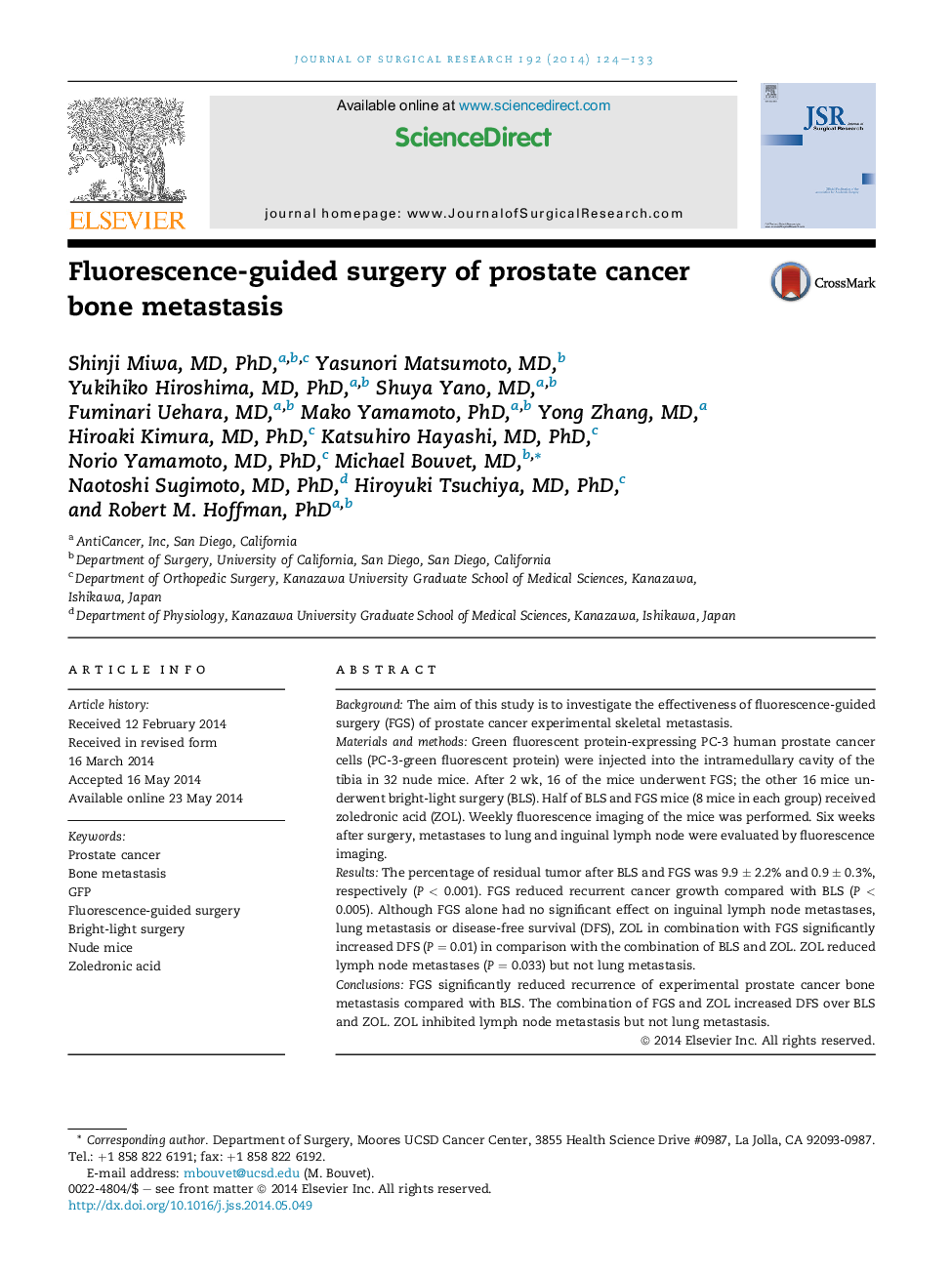| Article ID | Journal | Published Year | Pages | File Type |
|---|---|---|---|---|
| 4300074 | Journal of Surgical Research | 2014 | 10 Pages |
BackgroundThe aim of this study is to investigate the effectiveness of fluorescence-guided surgery (FGS) of prostate cancer experimental skeletal metastasis.Materials and methodsGreen fluorescent protein-expressing PC-3 human prostate cancer cells (PC-3-green fluorescent protein) were injected into the intramedullary cavity of the tibia in 32 nude mice. After 2 wk, 16 of the mice underwent FGS; the other 16 mice underwent bright-light surgery (BLS). Half of BLS and FGS mice (8 mice in each group) received zoledronic acid (ZOL). Weekly fluorescence imaging of the mice was performed. Six weeks after surgery, metastases to lung and inguinal lymph node were evaluated by fluorescence imaging.ResultsThe percentage of residual tumor after BLS and FGS was 9.9 ± 2.2% and 0.9 ± 0.3%, respectively (P < 0.001). FGS reduced recurrent cancer growth compared with BLS (P < 0.005). Although FGS alone had no significant effect on inguinal lymph node metastases, lung metastasis or disease-free survival (DFS), ZOL in combination with FGS significantly increased DFS (P = 0.01) in comparison with the combination of BLS and ZOL. ZOL reduced lymph node metastases (P = 0.033) but not lung metastasis.ConclusionsFGS significantly reduced recurrence of experimental prostate cancer bone metastasis compared with BLS. The combination of FGS and ZOL increased DFS over BLS and ZOL. ZOL inhibited lymph node metastasis but not lung metastasis.
